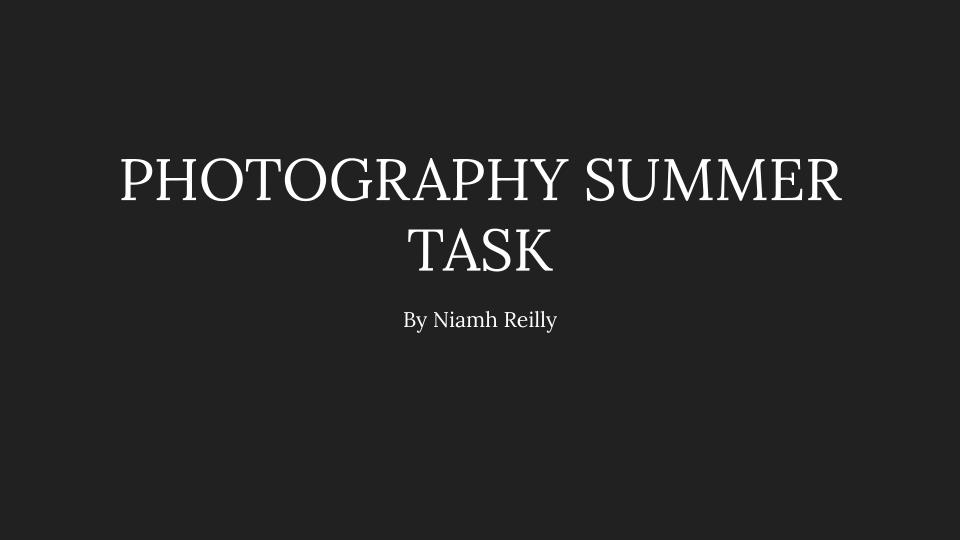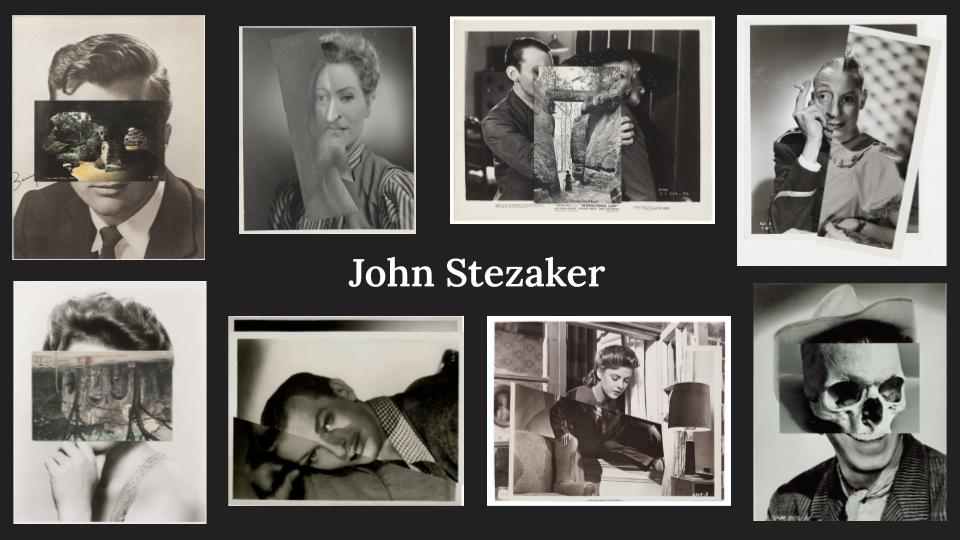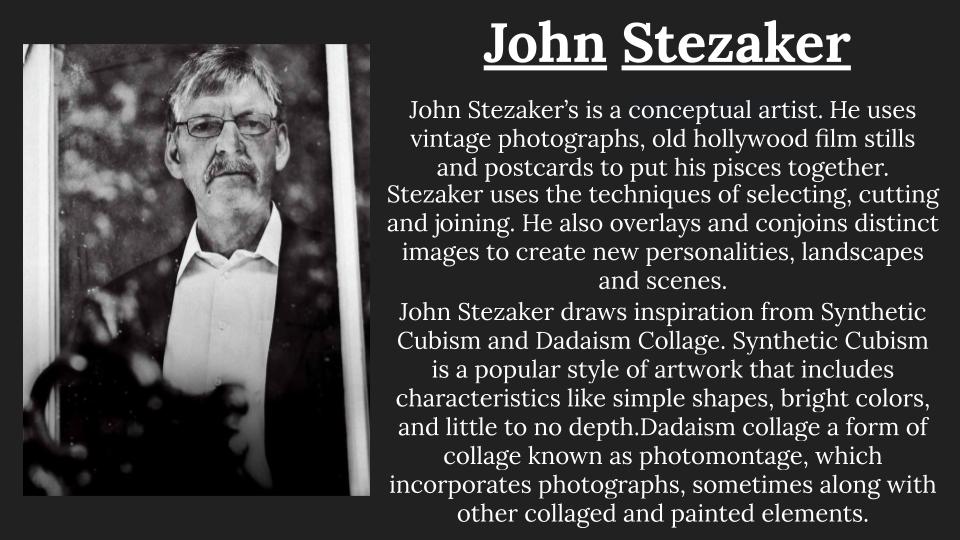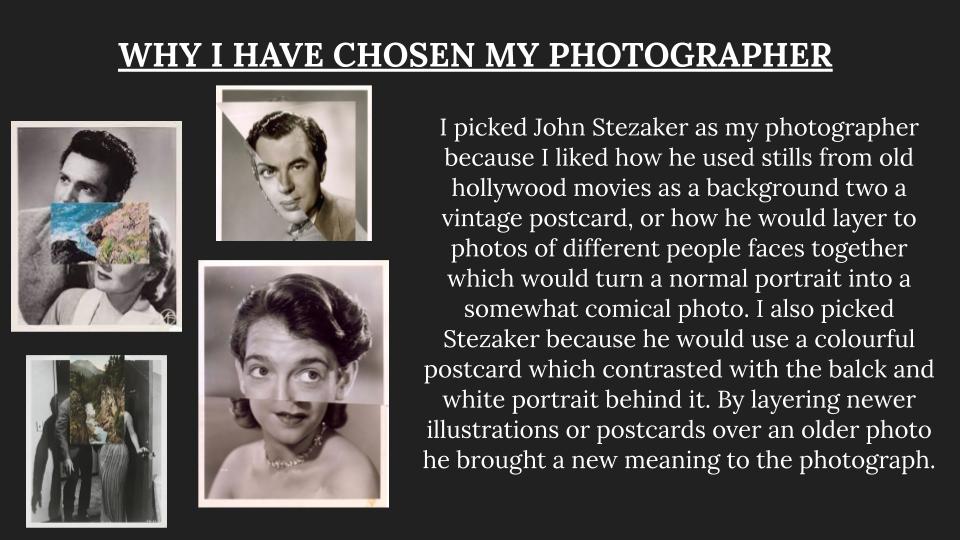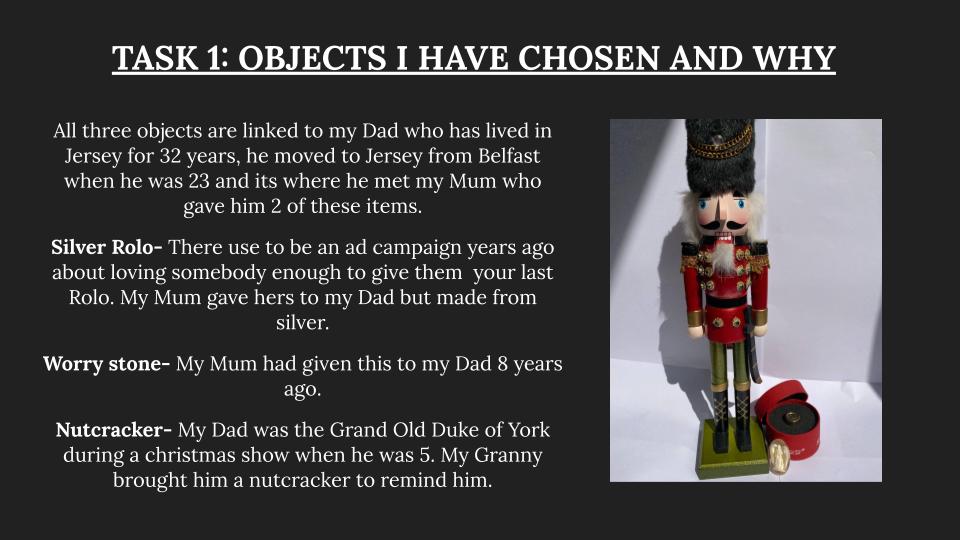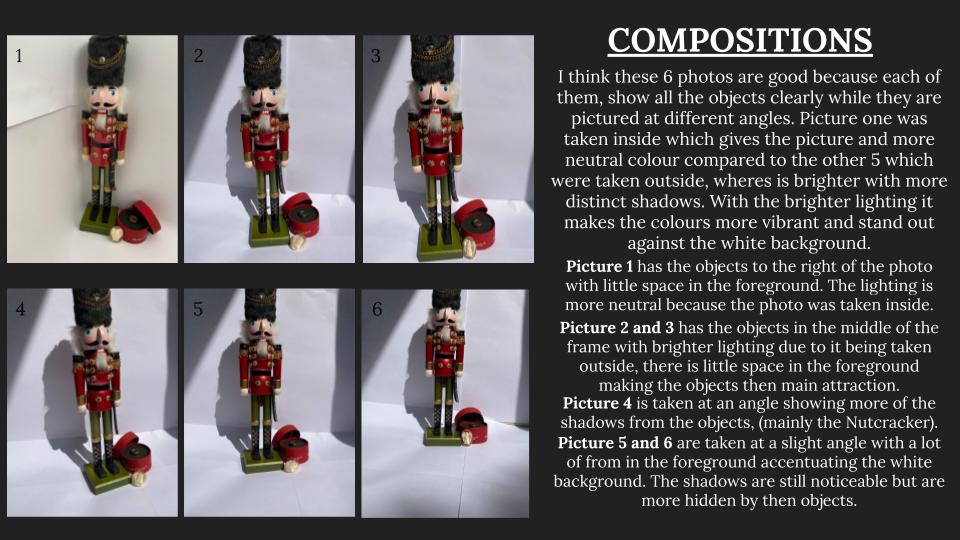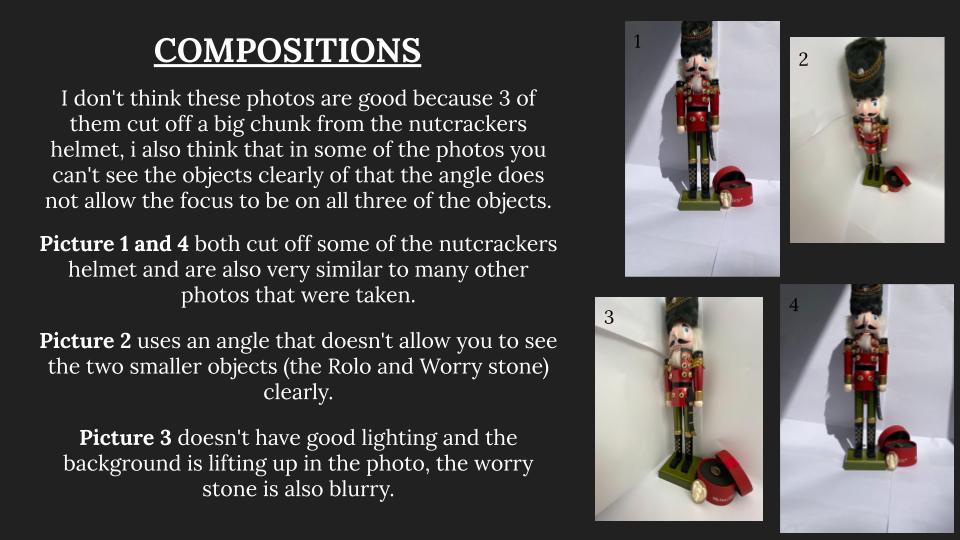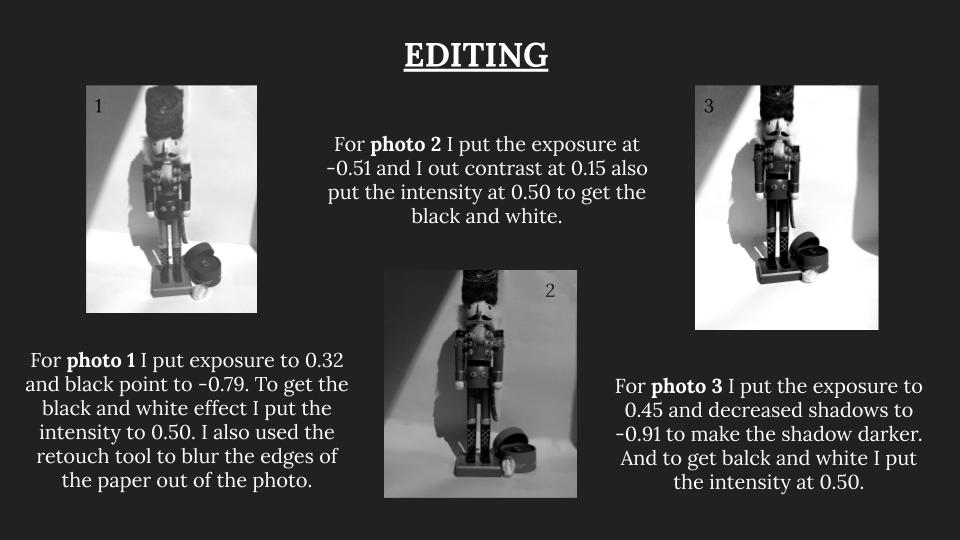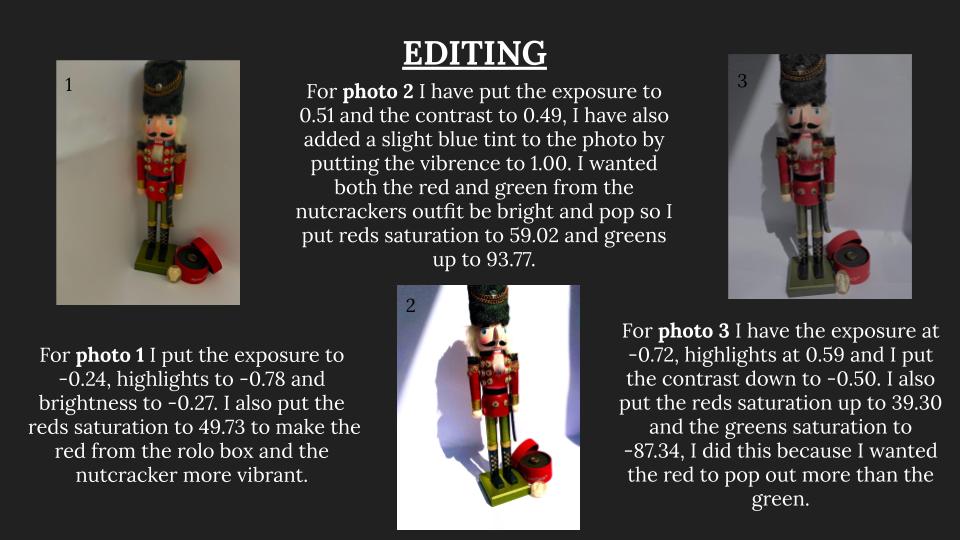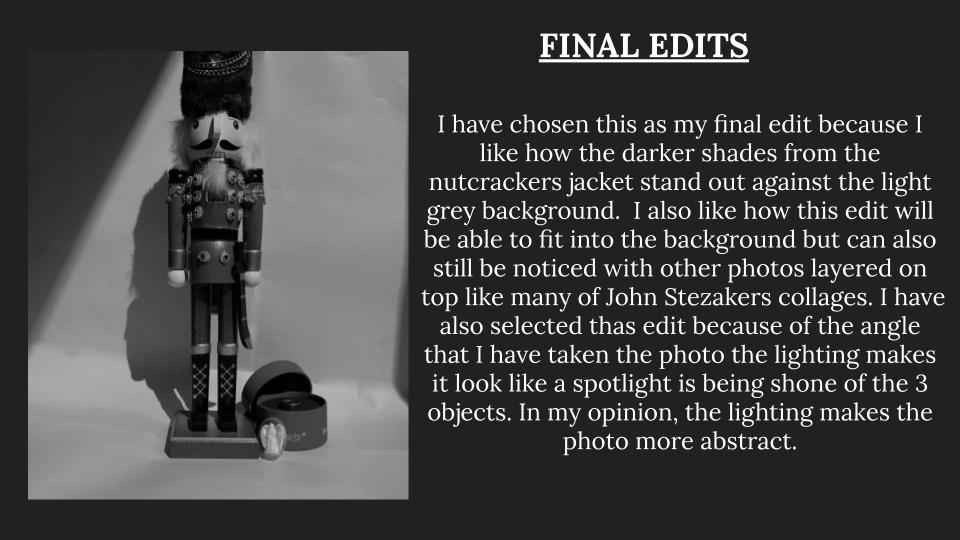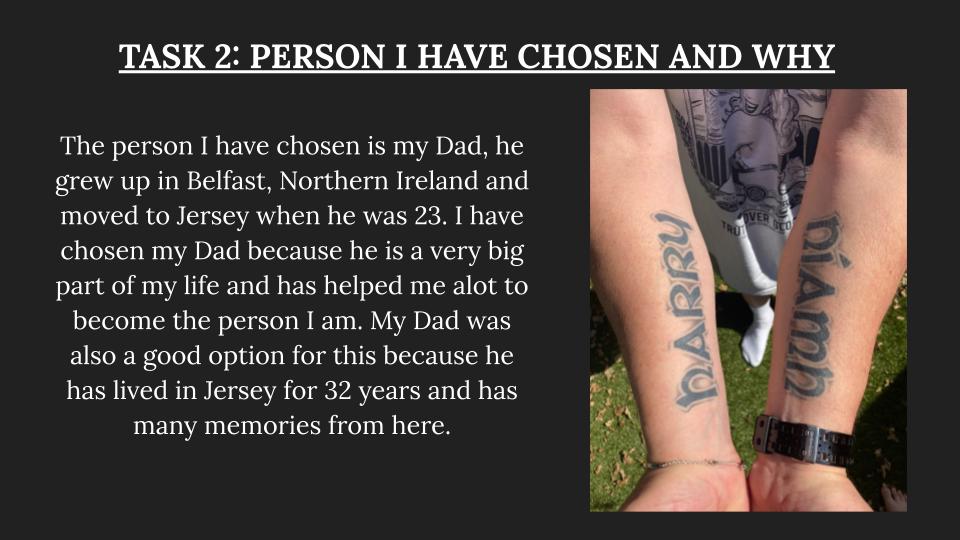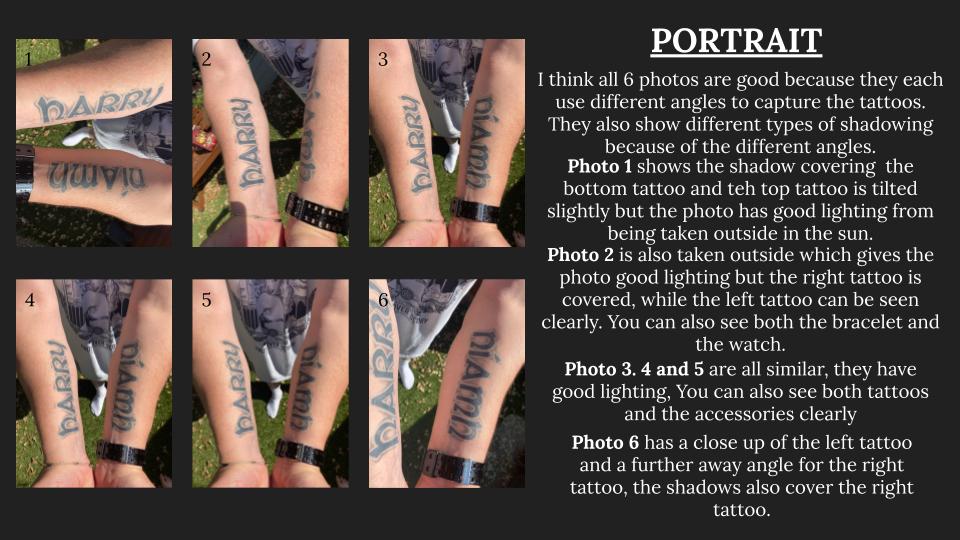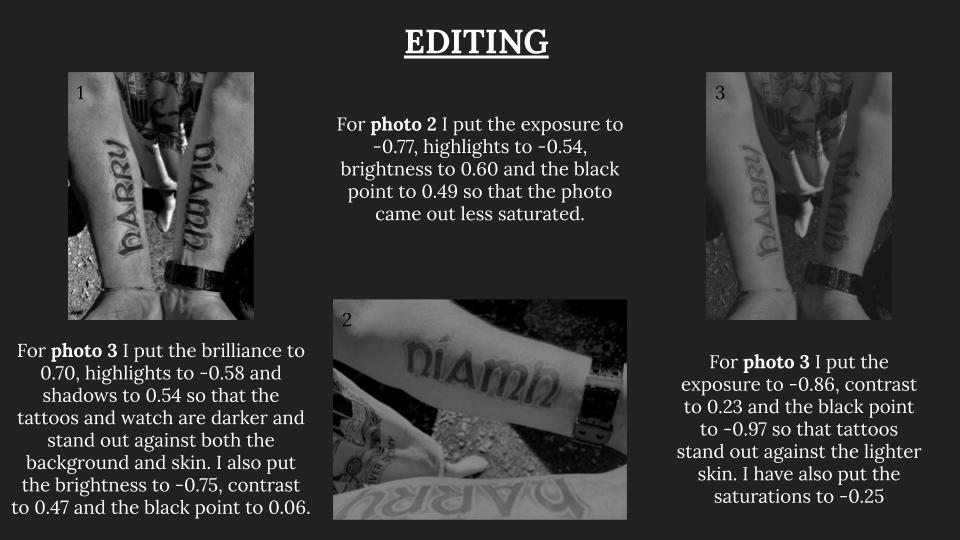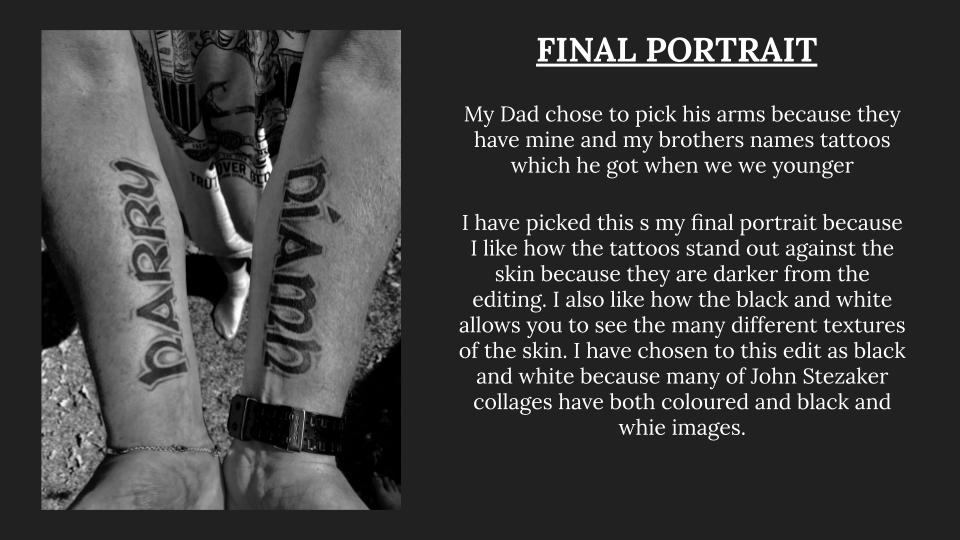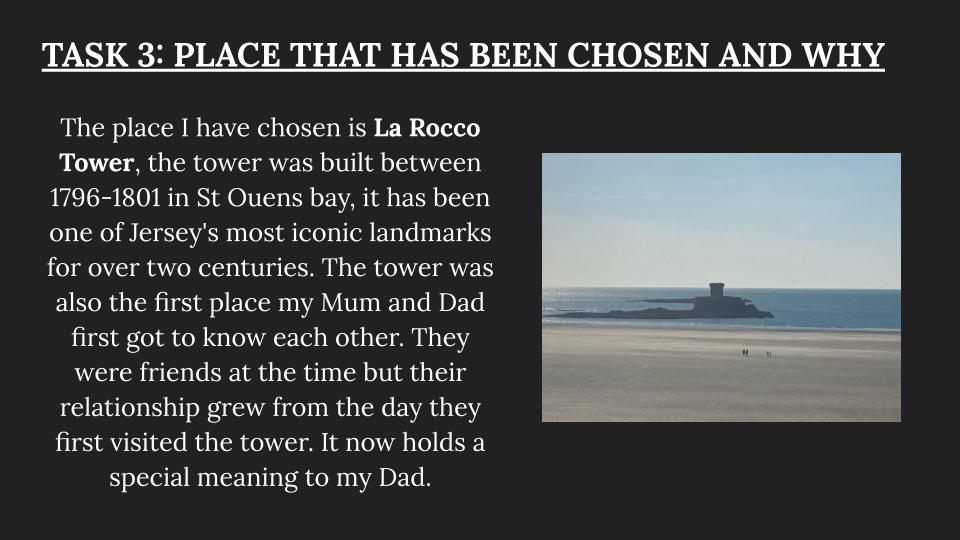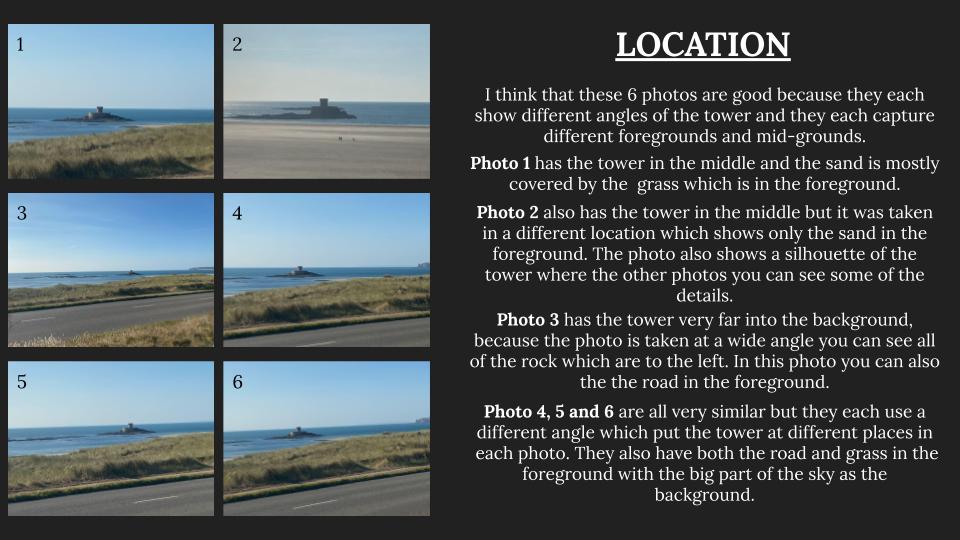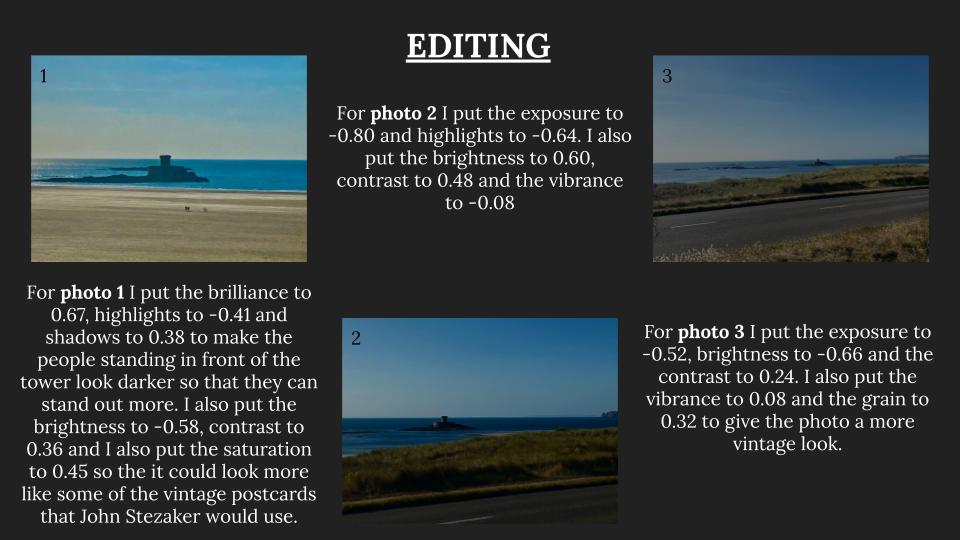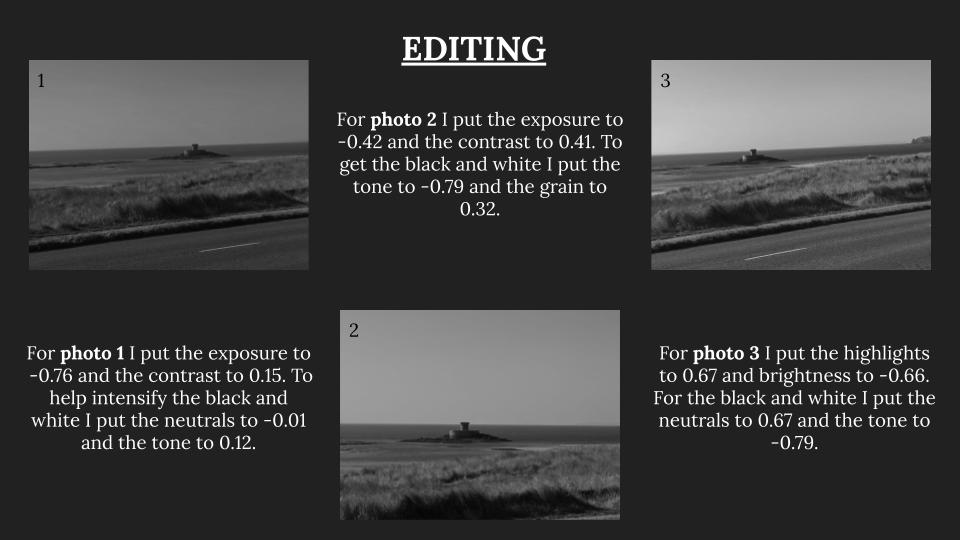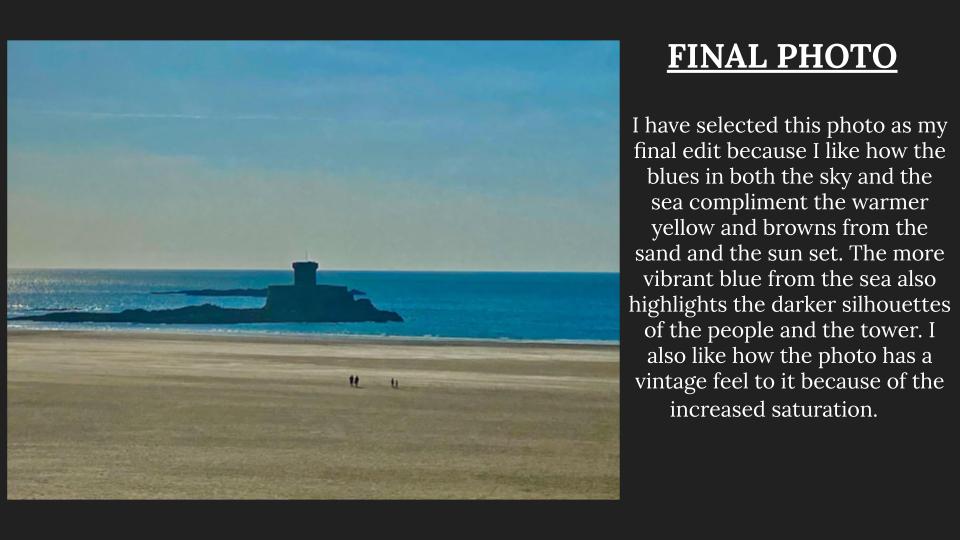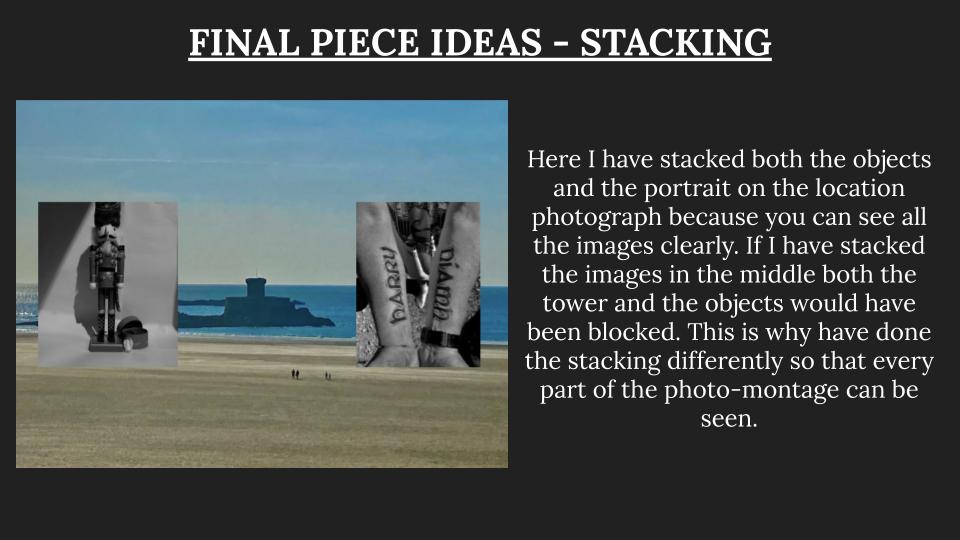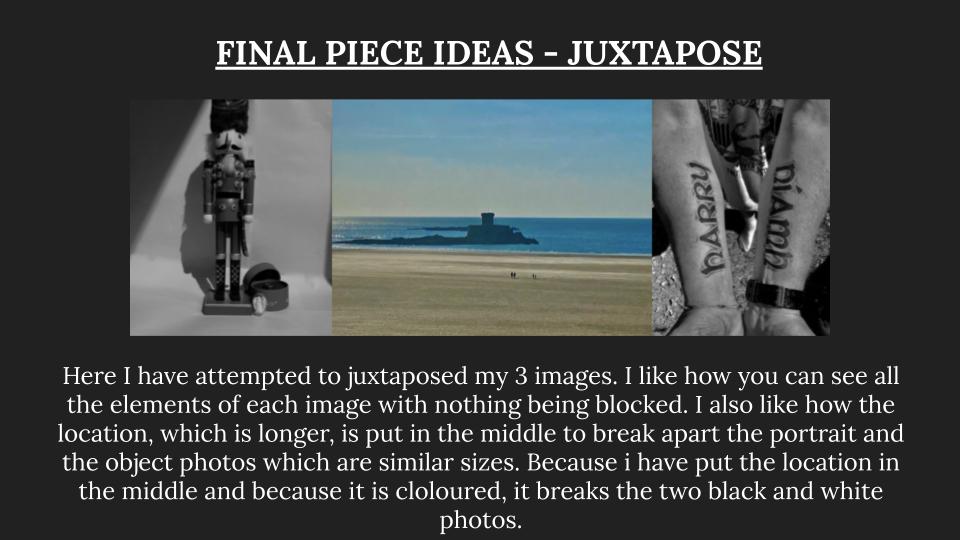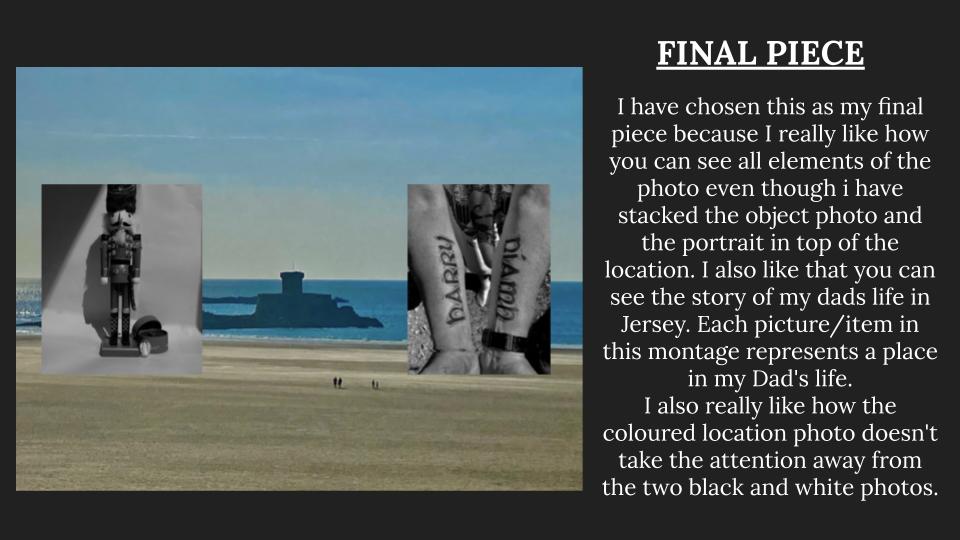Contact Sheets
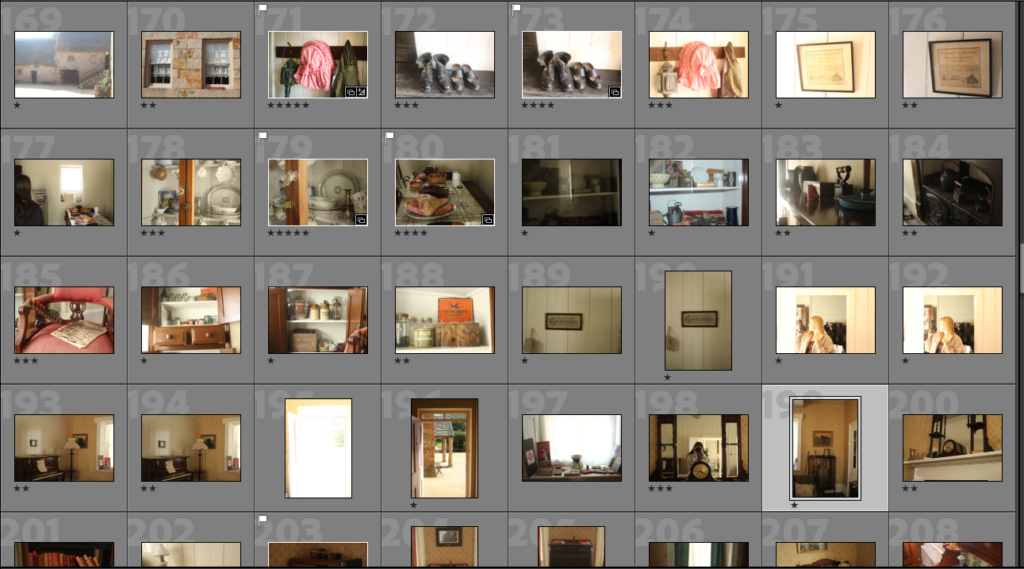
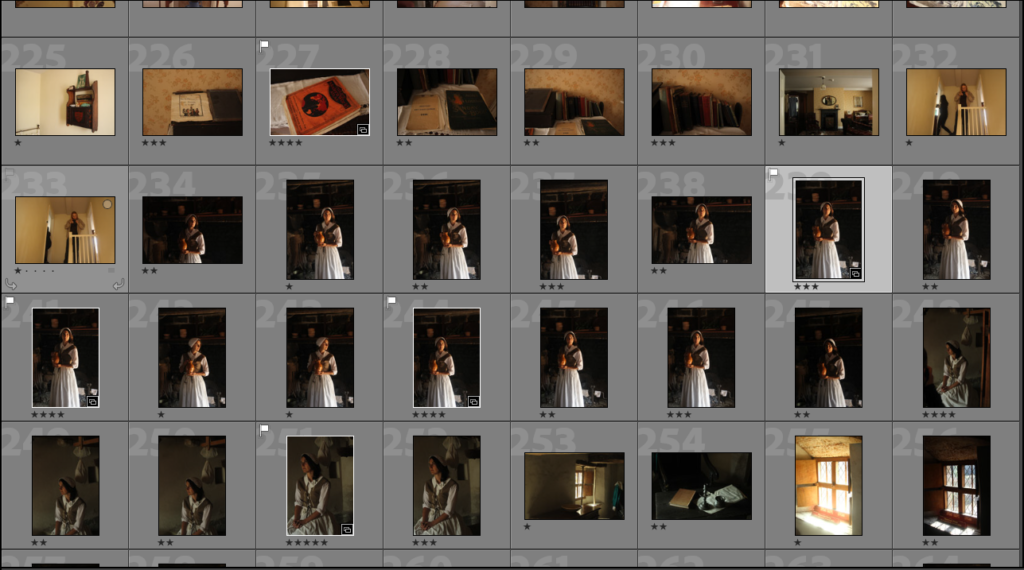
Edits
One of the good things about Lightroom is that while editing the photos you cab split the screen to show a before and after which allows you to see how your editing has developed the picture and might help you improve to more.
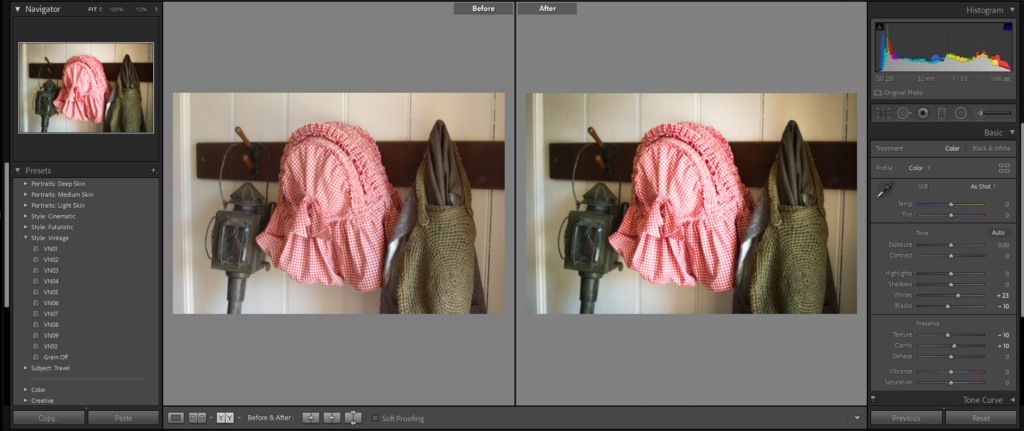
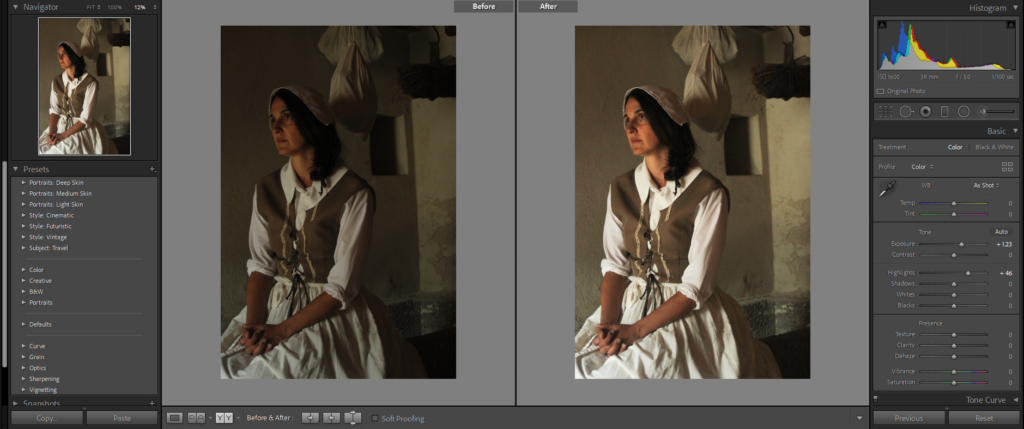
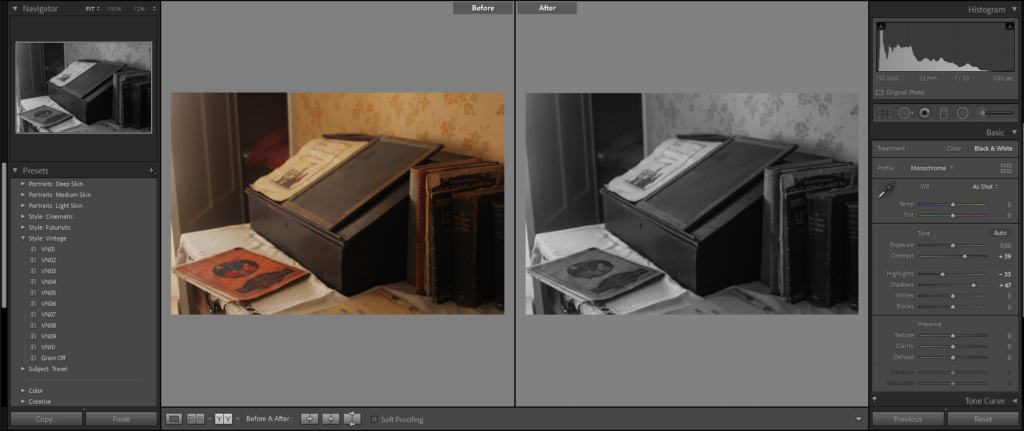
Contact Sheets


Edits
One of the good things about Lightroom is that while editing the photos you cab split the screen to show a before and after which allows you to see how your editing has developed the picture and might help you improve to more.



History of The Jersey Corn Riots
In 1767 protests raged against the exportation of grain from the Island. Anonymous threats were made against shipowners and a law was passed the following year so that all available corn was kept in Jersey. In August 1769 the States repealed this law, claiming that crops on the Island were plentiful and this meant that the Act was no longer necessary. There was no known loss of life, many came armed with sticks and clubs, and an usher was thrown over the court railing during the disturbance.

Acts of resistance started taking place. A corn ship about to export goods was raided by a group of women who demanded that the sailors unload their cargo and set about selling it on the Harbour, giving the proceeds to the owner of the vessel. All of the events paved the way for major political reform on the island. In the reform, known as the Code of 1771, the Royal Court was stripped of its legislative powers, meaning that from 1771, only the States Assembly could create laws.
The Power Of Protest
‘People! Power! Protest!’ explores the story of protest in Jersey, from the Corn Riots of 1769 to the Black Lives Matter movement of 2020.
Jersey has a fascinating history of protest on the Island and the theme of the exhibition coincides with the 250th anniversary of the Code of Laws that was introduced in response to the Corn Riots. Many items from these protests are displayed t the exhibit it shows the hardships that people from many generations have had to go through. One of the items showcased is the official 18th-century court records showing the redacted demands of the Corn Riots protestors, and the petition signed by thousands of people to try and save Queen’s Valley from being flooded in the 1980s.
As you walk into the exhibit you’ll see a stunning graffiti-style entrance wall of ‘People! Power! Protest!’ designed by James Carter, of Midnight Industries.
Affects of the corn riots at the time
The Corn Riots was essentially a time when in Jersey the majority of the land was owned by a family called the Lempriere family. They were exporting corn which was Jersey’s main source of food, over what they needed which meant that the people of Jersey were going hungry. The price of corn was increased and the price of rent was increased. People had enough with the Lempriere family and decided to riot in the Royal Square, they had marched from Trinity picking up parishioners on the way, they had marched into the Royal Court and ordered that their demands be written in the Court Book. The Lempriere family decided they didn’t want to make any of these changes, so they went to London to present the rioter’s problems to the King. But the King decided that the demands should be removed from the Court Book, Locals were furious, but £100 was offered to any rioters who turned another in so many people had changed sides.

Black History Month
October is Black History Month and is especially significant following the death of George Floyd in 2020. His death sparked protests around the world on racism, inequality and police brutality.
The movement began in July 2013, with the use of the hashtag #BlackLivesMatter on social media. after the acquittal of George Zimmerman in the shooting death of African-American teen Trayvon Martin 17 months earlier in February 2012. In the 2020 protests, an estimated 15 million to 26 million people participated in the 2020 Black Lives Matter protests in the United States, making it one of the largest movements in the country’s history.
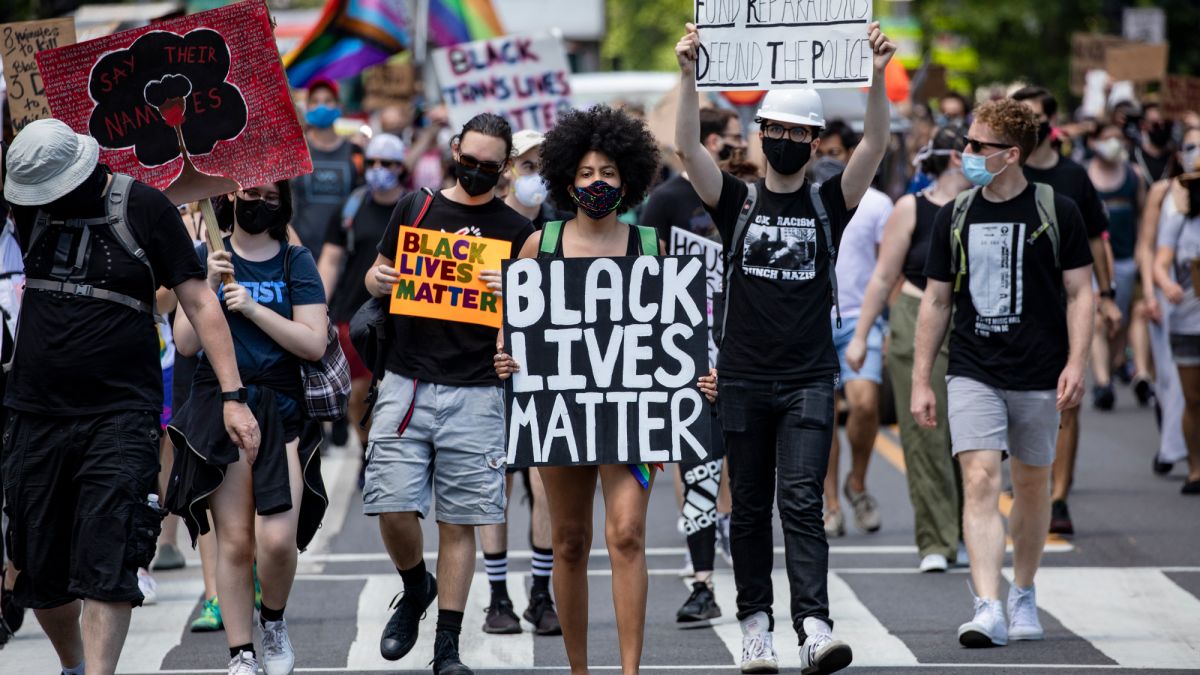
Camera Obscura

A camera obscura is a dark room with a small hole in one wall. When it’s bright outside, light enters through the hole and projects an upside-down image of the outside world onto the wall. The camera obscura was used in the 13th century for safe observation of eclipses and artists started to use them in the `15th century. The term “camera obscura” was first used by the German astronomer Johannes Kepler in the early 17th century. He used it for astronomical applications and had a portable tent camera for surveying in Upper Austria.

Early models of the camera obscura were large and consisted of a literal room or a tent. Later more portable variants were invented. They were wooden boxes that had a lens instead of a pinhole that can be moved to provide a focus. They also had a mirror that rotated the image and a screen onto which an image was projected. These cameras were the basis for early photographic cameras.
Nicephore Niepce

Joseph Nicéphore Niépce who’s more commonly known as Nicephore Niepce was a French inventor and is credited as the inventor of photography and a pioneer in the field. Niépce developed heliography, a technique he used to create the world’s oldest surviving product of a photographic process: a print made from a photoengraved printing plate in 1825. In 1826 or 1827, he used a primitive camera to produce the oldest surviving photograph of a real-world scene.

Letters to his sister-in-law around 1816 indicate that Niépce had managed to capture small camera images on paper coated with silver chloride, making him appear the first to have any success at all in such an attempt, but the results were negatives, dark where they should be light and vice versa, and he could find no way to stop them from darkening all over when brought into the light for viewing.
Louis Daguerre

Louis-Jacques-Mandé Daguerre better known as Louis Daguerre was a French painter and physicist who invented the first practical process of photography, known as the daguerreotype. Though the first permanent photograph from nature was made in 1826/27 by Nicephore Niepce in France, it was of poor quality and required about eight hours’ exposure time. The process that Daguerre developed required only 20 to 30 minutes.
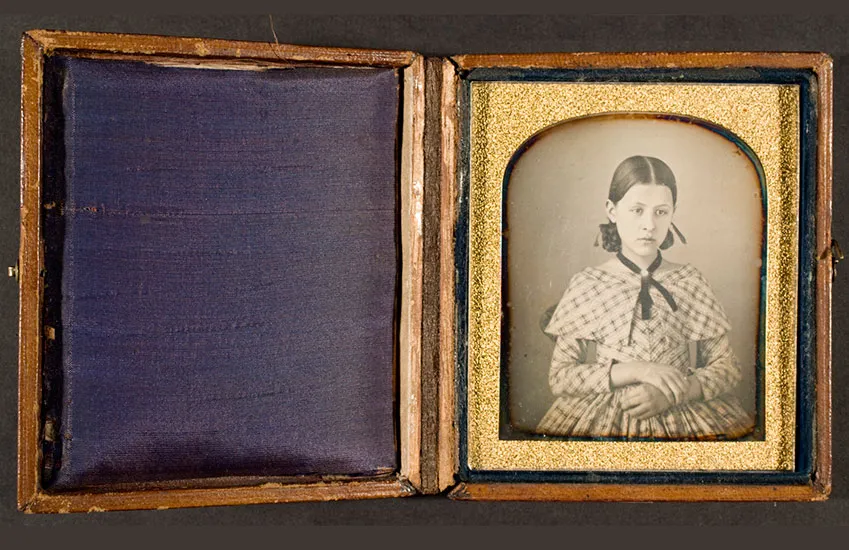
The daguerreotype was the first commercially successful photographic process (1839-1860) in the history of photography, each daguerreotype is a unique image on a silvered copper plate. Compared to photographic paper, a daguerreotype is not flexible and is rather heavy. The daguerreotype is accurate, detailed and sharp. It has a mirror-like surface and is very fragile. Since the metal plate is extremely vulnerable, most daguerreotypes are presented in special housing. Numerous portrait studio’s opened their doors from 1840 onward. Daguerreotypes were very expensive, so only the wealthy could afford to have their portrait taken. Even though the portrait was the most popular subject, the daguerreotype was used to record many other images such as topographic and documentary subjects, antiquities, still lives, natural phenomena and remarkable events.
The silver-plated copper plate had first to be cleaned and polished until the surface looked like a mirror. Next, the plate was sensitized in a closed box over iodine until it took on a yellow-rose appearance. The plate, held in a lightproof holder, was then transferred to the camera. After exposure to light, the plate was developed over hot mercury until an image appeared. To fix the image, the plate was immersed in a solution of sodium thiosulfate or salt and then toned with gold chloride. Exposure times for the earliest daguerreotypes ranged from three to fifteen minutes, making the process nearly impractical for portraiture. Modifications to the sensitization process coupled with the improvement of photographic lenses soon reduced the exposure time to less than a minute.
Henry Fox Talbot

William Henry Fox Talbot is best known for his development of the calotype, an early photographic process that was an improvement over the daguerreotype of the French inventor Louis Daguerre. Talbot’s calotypes used a photographic negative, from which multiple prints could be made; had his method been announced but a few weeks earlier, he and not Daguerre would probably have been known as the founder of photography.

He briefly served in Parliament (1833–34) and in 1835 published his first article documenting a photographic discovery, that of the paper negative. These so-called photogenic drawings were basically contacted prints on light-sensitive paper, which unfortunately produced dark and spotty images. In 1840 he modified and improved this process and called it the calotype (later the talbotype). Unlike the original process, it used a much shorter exposure time and a development process following exposure.
Richard Maddox
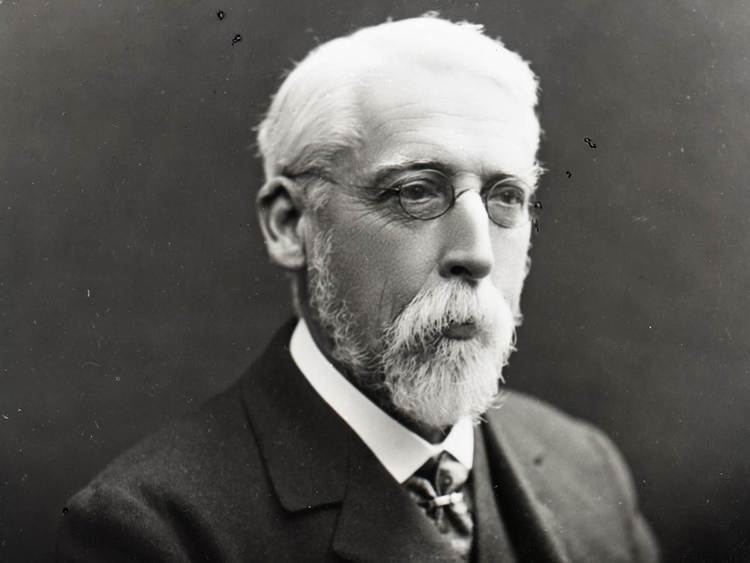
Richard Maddox is best known for his invention of lightweight gelatin negative plates for photography in 1871.
The Collodion process was invented in 1851 by Frederick Scott Archer. This invention required only two to three seconds of light exposure to produce an image, but plates had to be sensitized at the time of exposure, exposed while the emulsion was still wet, and processed immediately after exposure in the camera. When he noticed that his health was being affected by the ‘wet’ collodion’s ether vapour, Maddox began looking for a substitute.
The advantages of the dry plate were obvious: photographers could use commercial dry plates off the shelf instead of having to prepare their own emulsions in a mobile darkroom. Negatives did not have to be developed immediately. Also, for the first time, cameras could be made small enough to be hand-held, or even concealed: further research created ‘fast’ exposure times, which led to ‘snapshot’ photography.
George Eastman
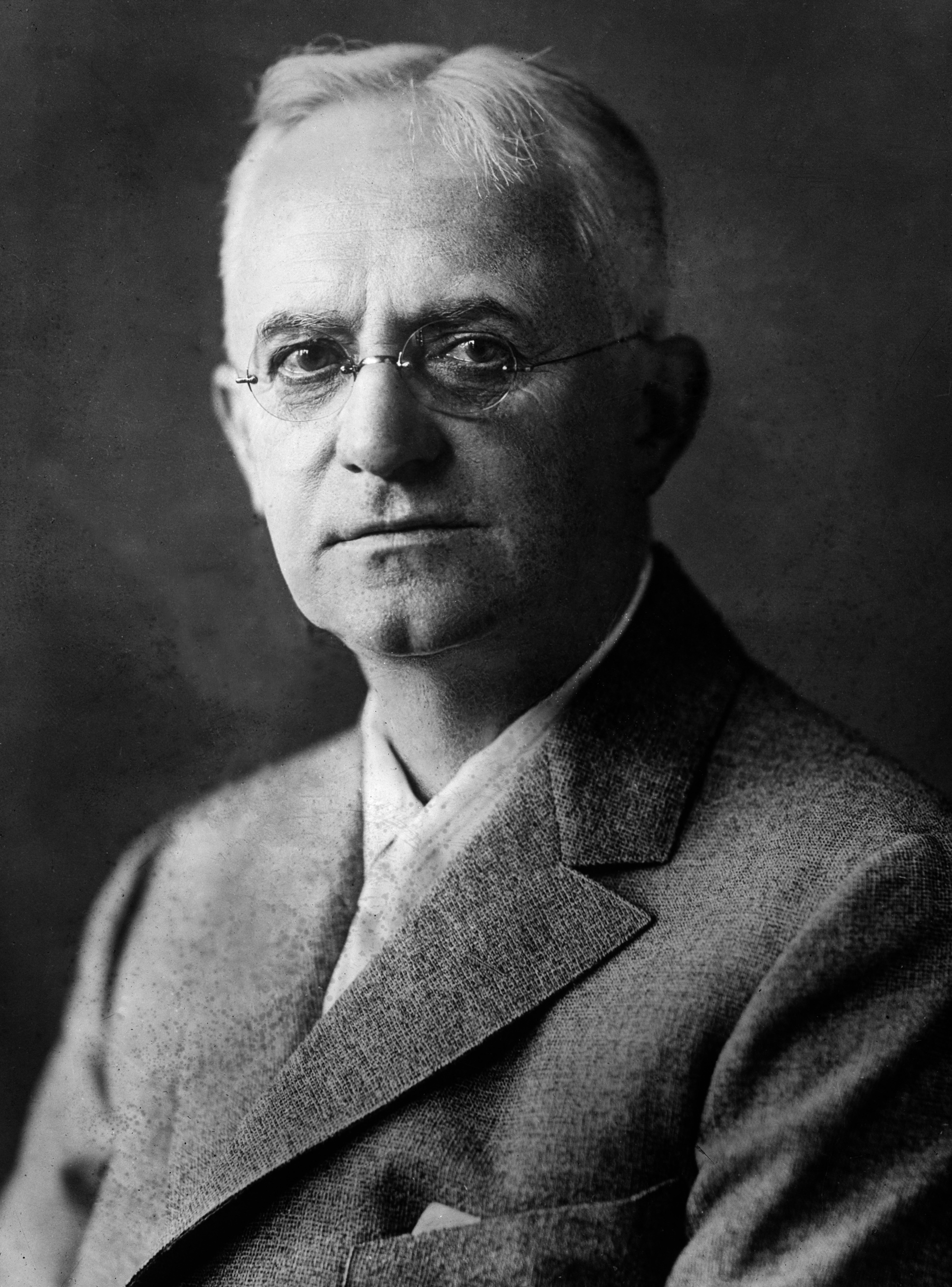
George Eastman was an entrepreneur, a philanthropist, and the pioneer of popular photography and motion picture film.
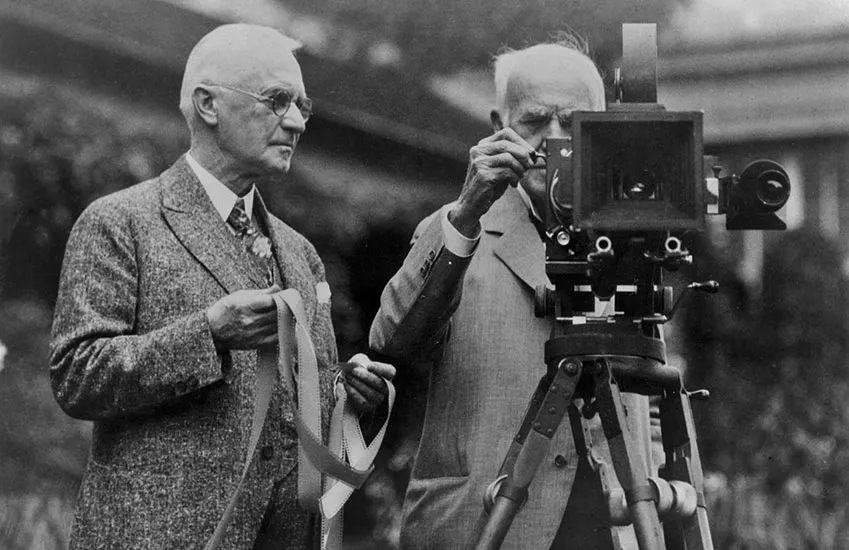
Eastman spent three years in his mother’s kitchen experimenting with gelatin emulsions, and by 1880, he had invented and patented the dry-plate coating machine. In 1881, with the financial backing of Rochester businessman Henry Strong, Eastman formed the Eastman Dry Plate Company (reincorporated as the Eastman Dry Plate and Film Company in 1884 and as Eastman Kodak Company in 1892). With a series of innovations, the company created easy-to-use cameras that made photography widely accessible, established the practice of professional photofinishing, and developed a flexible film that was a critical contribution to the launch of the motion picture industry.
Kodak (Brownie)

The Brownie was a series of cameras made by Eastman Kodak. Introduced in 1900, it introduced the snapshot to the masses. It was a basic cardboard box camera. The name comes from the brownies (spirits in folklore) in Palmer Cox cartoons. Over 150,000 Brownie cameras were shipped in the first year of production. An improved model, called No. 2 Brownie came in 1901. Brownies were extensively marketed to children, with Kodak using them to popularise photography. They were also taken to war by soldiers.

The cameras continued to be popular and spawned many varieties, such as a Boy Scout edition in the 1930s. In 1940, Kodak released the Six-20 Flash Brownie, Kodak’s first internally synchronized flash camera, using General Electric bulbs. In 1957, Kodak produced the Brownie Starflash, Kodak’s first camera with a built-in flash. The last official Brownie camera made was the Brownie II Camera, a 110 cartridge film model produced in Brazil for one year in 1986.
Film/Print Photography

Print film, when developed, produces transparent negatives with the light and dark areas and colours (if the colour film is used).
Film photography is the art of taking photographs on thin, transparent strips of plastic we call the film. One side of the film strip is coated with a gelatin emulsion that contains small silver halide crystals, which determine the contrast and resolution of a photograph. Silver halide crystals are light-sensitive. The more light they’re exposed to, the brighter and less detailed the photograph will be.
The first flexible photographic roll film was sold by George Eastman in 1885, but this original “film” was actually a coating on a paper base. As part of the processing, the image-bearing layer was stripped from the paper and attached to a sheet of hardened clear gelatin. The first transparent plastic roll film followed in 1889.
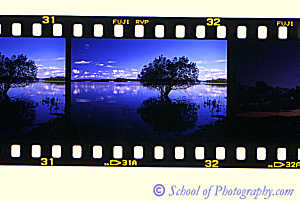
After you shoot the film, you have to develop it in the darkroom. Manually “editing” in the darkroom involves different techniques in the printing process. The two simplest exposure techniques are dodging and burning. Dodging is decreasing the exposure to make part of a photograph lighter. Burning involves increasing the exposure to make part of a photograph darker. You can also adjust things like contrast, shadows, highlights, and colour.
Digital Photography

While digital photography has only relatively recently become mainstream, the late 20th century saw many small developments leading to its creation. Digital photography started in the 1950s, in 1951 the first digital signals were saved to magnetic tape via the first videotape recorder. Following this, in 1957 the first digital image was produced through a computer by Russell Kirsch.
The first published colour digital photograph was produced in 1972 by Michael Francis Tompsett using CCD (charge-coupled device) sensor technology and was featured on the cover of Electronics Magazine.

The first digital single-lens reflex (DSLR) camera was the Nikon SVC prototype demonstrated in 1986, followed by the commercial Nikon QV-1000C released in 1988. The advent of digital photography also gave way to cultural changes in the field of photography. Unlike with traditional photography, dark rooms and hazardous chemicals were no longer required for post-production of an image, images could now be processed and enhanced from behind a computer screen in one’s own home. This allowed photographers to be more creative with their processing and editing techniques. As the field became more popular, types of digital photography and photographers diversified.
The camera phone helped popularize digital photography, along with the internet, social media and the JPEG image format. The first cell phones with built-in digital cameras were produced in 2000 by Sharp and Samsung.
William Collie
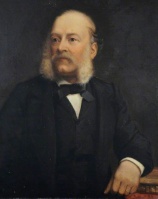
Collie was born in Scotland in October of 1810, he started his professional life as a portrait painter. He moved south and is recorded as living in St Helier, Jersey, before 1841 where he had a portrait business. In the late 1840s, he made a series of genre calotype portraits depicting ‘French and Jersey Market Women’,

Calotype is an early photographic process introduced by William Henry Fox Talbot in 1841. The term calotype comes from the Ancien Greek (kalos), “beautiful”, and (tupos), “impression”.
The calotype is sometimes called a “Talbotype.” This process uses a paper negative to make a print with a softer, less sharp image than the daguerreotype, but because a negative is produced, it is possible to make multiple copies. The image is contained in the fabric of the paper rather than on the surface, so the paper fibers tend to show through on the prints.
HISTORY
In 1842 and British scientist, Sir John Herschel discovered the cyanotype process, the process is still used today in the same way which produces a white image on top a dark blue background.
Cyanotype is a photographic printing process which engineers used well into the 20th century as a low cost process to produce copies of drawings. This process used two chemicals: ferric ammonium citrate and potassium ferricyanide.

ANNA ATKINS
Anna Atkins was born in Tonbridge, United Kingdom on March 16, 1799 and later died on June 9, 1871. Atkins was a botanical artist, collector and photographer and was the first person to illustrate with photographic images. Anna’s use of new photographic technologies merged art and science, it also exemplified the exceptional potential of photography in books.
When Atkins would create her cyanotypes she used light exposure and a simple chemical mixture to create very detailed blueprints of botanical specimens. She published her images in 1843, in her book Photographs of British Algae: Cyanotype Impressions, this was the first book to be printed and illustrated by photography.

My Cyanotype
While at Hampton we got to create our own cyanotype, above I put an image of my final piece which I created whilst I was at Hampton, as it was a perfect day to create cyanotypes as it was it was a lovely summer day with warm temperatures. My favourite part of my piece is the feather in the bottom left side that is fading into the background, I like the faded effect of the object going into the background as it was completely unintentional but adds to the aesthetic of the piece. Furthermore, I like the mixture of shapes of the objects at the top of the piece as some objects such as the leaf came out legible and others such as the flower petals to the left turned out muddy and unclear.

Hamptonne Country Life Museum allows visitors to explore the house and farm which date back to the 15th century, they give an insight into the rural history of Jersey. You can walk through the houses getting to learn about how people lived, you can also walk through the apple orchard and the cider barn which tells you about the history of cider making. You can also meet the Hamptonne claves, lambs, piglets and chickens.
The History

The farm gets its name from Laurens Hamptonne who purchased it in 1633. The property is also known as ‘La Patente’, as is the name of one of the roads that passes it, after the Grants by Letters Patent received by its owner Richard Langlois in 1445, and by King Charles II to Laurens Hamptonne in 1649. The farm has medieval origins and consecutive owners have made marked improvements to the living accommodation. The main buildings are therefore named after the Langlois, Hamptonne and Syvret families, who lived here between the 15th and 19th centuries.
The Characters (Living History)
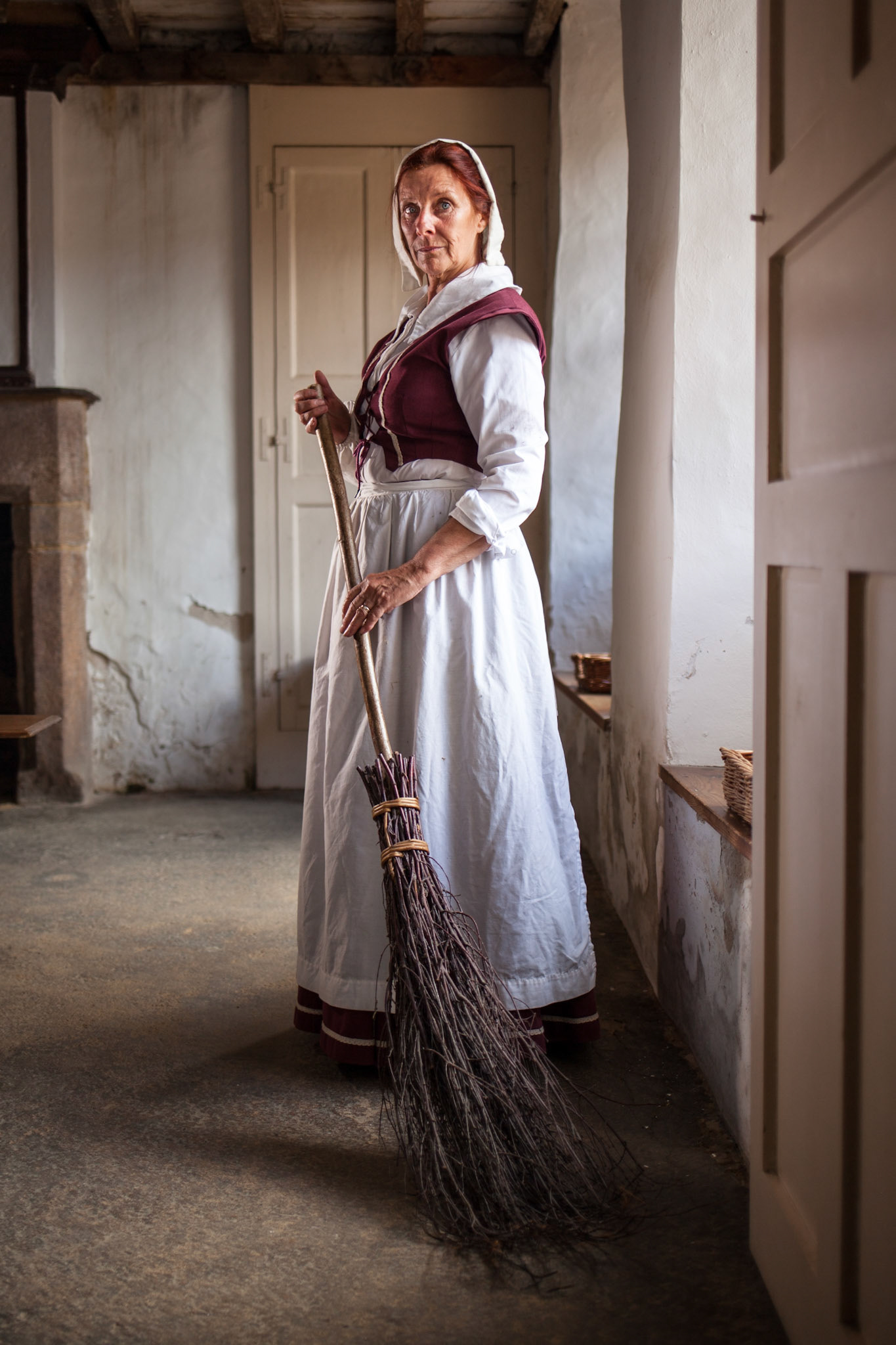
While visiting Hamptonne you could meet one of the characters who roam around and tell you some of the histories of the farm. You could meet the Goodwyf who can tell you about Hamptonne’s royal connections and give you an insight into her day to day life, including cooking on the open fire, making soap and candles, and preparing herbal remedies and makeup. You might also meet the wool spinners, knitters and dyers who recreate the historic art of hand spinning yarn on a wheel, natural dyeing and the knitting of the fashionable stockings, which formed a mainstay of rural life in Jersey for some 200 years. Or you could meet the blacksmith The blacksmith was an important man on the farm in the 19th century, as he shaped and repaired all things made of metal.
Tom Kennedy
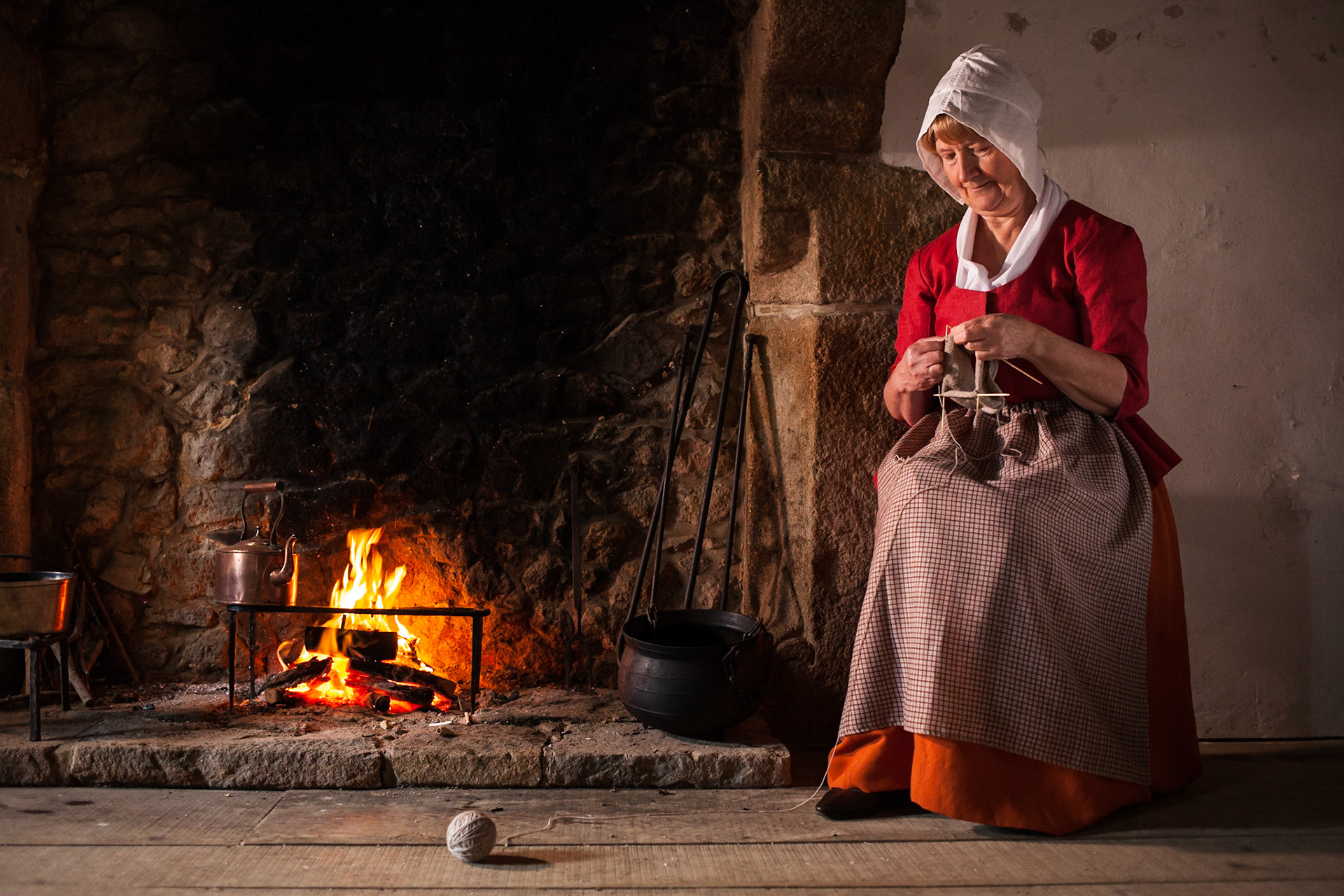
Tom Kennedy is a freelance photographer and filmmaker from Jersey CI, working in the U.K and worldwide. He co-runs the creative photography and film production company Little River Pictures with his wife Annigna Kennedy who frequently stars in his pictures. He works with living history and photographs many characters in their natural environments from their time periods. He uses soft natural lighting and sometimes artificial lighting to capture these moments of ‘living history’

Tom is influenced by “painting with light” and the Dutch Masters paintings of the 17th Century including such masters as Rembrandt and Vermeer.
Why do people take/make photographs?
Photos are a way of solidifying memories and personal experiences it also lets us relive and remember special events that have happened, birthdays, weddings, parties and family that are no longer here. Photography also allows us to share these memories with other people and share our experiences.
Why is photography important?
Photographs play an important role in everyone’s life, they help us keep memories and connect to our past. Photography is also a way to express ourselves and lets us see things that we would have never noticed. It also lets us see into other peoples minds and helps them conveys a message to the rest of the world, they have a positive influence on society by letting people express their emotions.

How many different kinds of photography can you think of?
There are many different types of photography that change in subject manner, equipment and technique. Some include landscape photography, wildlife photography, aerial photography, sports/action photography, portrait photography, architectural photography, wedding photography/event photography and fashion photography.
Can photographic images be trusted?
With all the editing software that allows us to modify and change anything we want in pictures, it has become increasingly more difficult to trust. Many people can now edit pictures to make them look like something that hasn’t actually happened which could have many effects on the world or peoples view of it. But photography can also show us the real issues in the world and without them, many of the issues would never be seen or talked about.

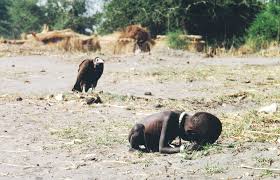
This is one of Kevin Carters most “iconic”, but “controversial” images which was published in the New York Times in 1993. The image of the collapsed Sudanese girl and the vulture leave the viewers in suspense because they don’t get a second image leaving them to image what happened next. The image is cold and depressing because the little girl was on her way to a feeding centre when the picture was taken and because of the vultures stance it seems like he thinks the little girl is there prey. This image shows the real struggles which people who live in these parts of the world experience and it shows what many people don’t see in everyday life.

Carter got a lot of backlash for this image and was scrutinised for not helping the little girl which led to his unfortunate suicide due to being blamed, but what the public didn’t see was what surrounded the girl. The child was just outside the feeding centre with her parents but unfortunately collapsed when Carter took the picture.
